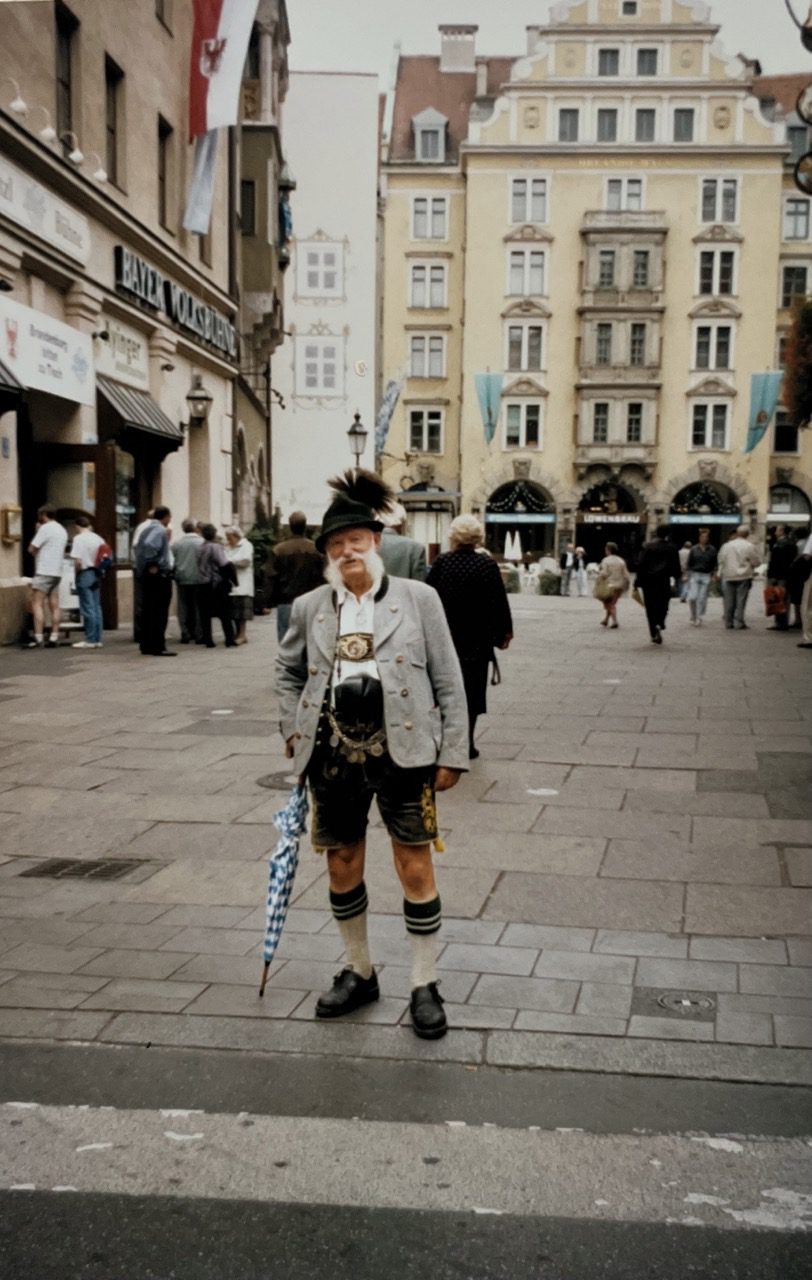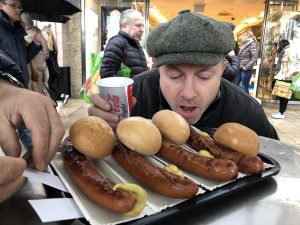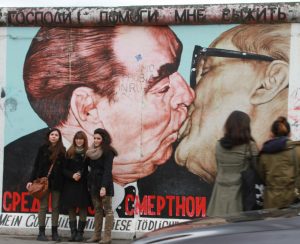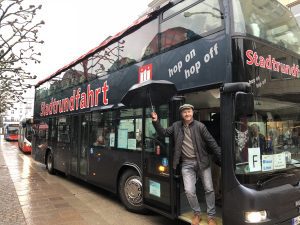🙂 Oktoberfest!
🙁 Expensive for backpackers!
The main reason for our visit was the Famous Oktoberfest and it did no disappoint! It is HUGE and attracts people from all over the world with large fun fairs and beer halls. There is also a wide variety of traditional foods available. Oktoberfest originally took place in the 16-day period leading up to the first Sunday in October. I think he photos capture the ambiamce quite well! I managed to sneak out 4 large stein glasses n the pram – I still have one today!









Trent loved wondering around gazing at all the exciting rides! Many people are clad in the traditional Bavarian lederhosen and dirndl – Lederhosen were never intended to be a traditional costume. Rather, they were created as work wear for peasants. It became fashionable for noble society to emulate peasant style during the 18th century. Lederhosen worked their way up to courtly society while still being used by peasants. This resulted in lederhosen being the universal German attire. The dirndl’s history parallels with that of the lederhosen. The dirndl emerged in Germany during the 18th century and was also intended for working peasants. This female Tracht was designed to be a maid’s dress for house and farm workers. Much like the lederhosen were adopted by the upper class in the 18th century, the dirndl started to make appearances in the nobles’ community. Rather than using the same affordable wools of the peasants, richer dirndls were made of silk, satin, and expensive fabrics.









I still have the Bierkrug that I bought there.



We were in a campervan and stayed at a campsite next to the river where Trent enjoyed feeding the ducks and swans.


The U-Bahn was very close to the campsite and we took the traininto the Main Square.



Marienplatz is a central square in the city centre of Munich, Germany. It has been the city’s main square since 1158.
Neues Rathaus, or New Town Hall is a striking Neo-Gothic building that has been home to the city’s government offices since it opened in 1874. The Rathaus-Glockenspiel is a large mechanical clock located in Marienplatz Square, in the heart of Munich, Germany. Famous for its life-size characters, the clock twice daily reenacts scenes from Munich’s history.






The Hofbräuhaus is a 3-floor beer hall dating back to the 16th century, with a Bavarian restaurant, shows & upbeat vibe.




Great fun! We then headed to Dachau which was a sombre reminder of a dark time. Dachau was one of the first concentration camps built by Nazi Germany and the longest running one, opening on 22 March 1933.




Go to: Germany




